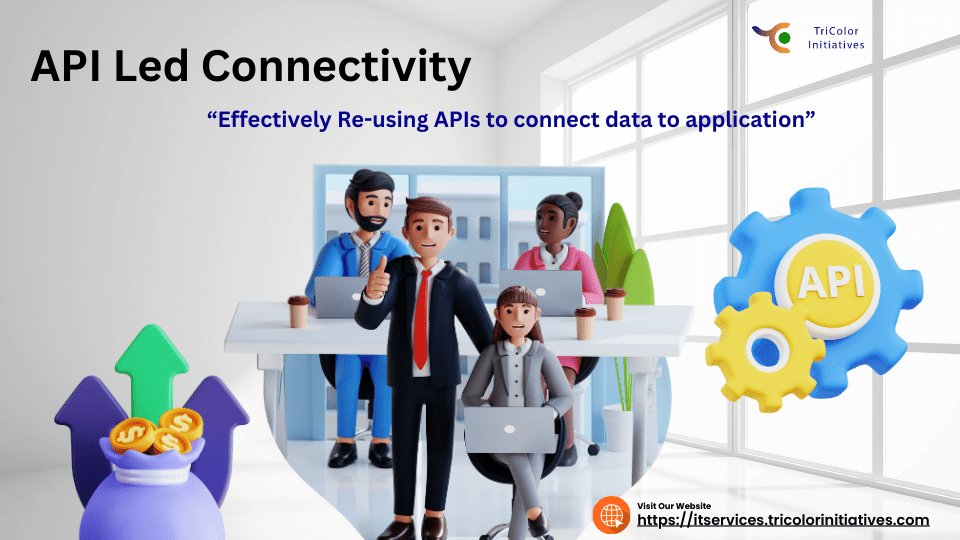Why do we require API Led Connectivity?
API Led Connectivity is an essential integration strategy. Since the technologies that companies are using to engross their employees, partners, and customers have been modified significantly. The conjunction of the company technologies like SaaS, Big data, APIs, and social are offering robust new tools. They enable enterprises to do more and unlatch the latest revenue streams. Also, comprehend their users better, and introduce more rapidly than ever before.
Commonly, integrations are performed through point-to-point connections, performed in an ad hoc manner every time a project needs. However, this results in brittle and difficult systems that tend to fail and need a large amount of IT time and assets to maintain.
Types of APIs & Purpose
API-led connectivity offers a technique that connects and exposes threats. By this approach, instead of linking things point-to-point, all the assets become managed API. We use the APIs in the API-led approach to correlation settle into three categories:
System APIs:
Basically, these APIs access the core systems of the record. And offer ways of covering users from difficulty or modifications to the inherent systems. After building, users can access the data without learning the inherent systems and reuse the APIs in different projects. So, it allows us to retrieve the primary data from the record system like SAP, Salesforce, etc. However, we can bare the data retrieval from the backend systems to the upstream API securely and reliably.
- System API is accountable for connecting the backend systems and retrieving the necessary raw data.
- Transform the raw data from the backend systems.
- Cleansing preliminary data from the backend systems.
- Error Mapping and Handling from backend systems.
- Disclose the data to upstream API reliably and securely.
Experience APIs:
Experience APIs are how we reconfigure the data such that its target audience utilizes it, all from the general data source, instead of establishing individual point-to-point integration for every channel. Generally, the Experience API is built with the API-first design principles where we design the API with a particular user experience in mind. Moreover, it is a user-facing API and can reuse through different channels like web applications, mobile applications, or any other way. Usually, Experience APIs are channel specific.
Process APIs:
These APIs communicate with and form the data in a single system or throughput systems and are developing here without a dependency on source systems from which data generates and the intent channel across which we deliver the data. Moreover, it is accountable for understanding the downstream API. The essential functionality of the Process API is to deploy business logic, data routing, and data aggregation. We should address the following questions to design the proper APIs:
- What is the essential functionality of process API?
- Do we need Process API?
- Does Business Logic Available in the backend service?
- Who will use the Process API?
By designing and arranging our APIs in this way and later making them available and discoverable for the business to the self-service. API-led connectivity has done our business assemblable, allowing teams across the business to adapt, compose, and recompose the APIs for handling the modification requirements of the business.
How Does API-led Connectivity Minimize IT’s Workload?
API-led connectivity has a prominent role to perform. This is due to IT frequently assigning with deploying these technologies, doing the required changes, and preserving inheritance systems. Requests they must satisfy are ever-increasing, precisely as their resources remain persistent. Hence, we will get the below results:

Frequently, the number of new projects required to carry out today’s technology requirements deliberate against IT’s ability for delivering them – is coiling ever upward. Therefore, the technology requires the needs of the enterprise continuously increase day by day in a multiplicative manner, IT resources will only rise linearly, regardless of how many resources an enterprise can shoot at the problem.
Advantages of API-Led Connectivity
The API-Led Connectivity approach provides IT projects and assures you are not only on the budget and time with our first projects. Yet we have developed reusable assets that will maintain your enterprise’s money and time, generate the infrastructure that is set for modification, grow in visibility, and governance, and most elementally, satisfy the requirements of the business, which is long-term sustained guilty.
Moreover, api-led connectivity components enables us to shift fast on our first project. Yet later actually expedite our project onwards, because of reusable assets and a constructed organizational ability. Also, the API-Led Connectivity releases resources, allowing you to invent and shift rapidly. The users of MuleSoft discovered that the rise in agility and hastening offered by API-Led connectivity results in delivering the projects 3x quicker and raised team efficiency by 300%, as compared to homegrown or legacy integration solutions.
API Led Connectivity stratigically organizes APIs into layers—System APIs, Process APIs, and Experience APIs—businesses can manage their data flows more efficiently and securely. The experience layer in API led connectivity tailors the data for specific user needs, ensuring a seamless experience across various platforms. The advantages of API Led Connectivity include increased agility, faster project completion, and the efficient use of IT resources, allowing businesses to innovate and respond to market changes swiftly.
It showcases its benefits by simplifying integration processes and promoting reusability and scalability. This methodology enables businesses to deliver projects significantly faster than traditional methods, enhancing efficiency and reducing time-to-market. The uses of API Led Connectivity are extensive, from streamlining internal operations to improving customer experiences, making it a crucial component in any digital strategy. By leveraging the full potential of MuleSoft’s API Led Connectivity components, businesses can unlock new levels of innovation and maintain a competitive edge in their industries, ensuring they are well-prepared to adapt to future challenges.
Conclusion
API Led Connectivity is a modern approach available in MuleSoft for connecting data and applications. Distinct APIs like System APIs, Experience APIs, and Process APIs will support this approach. And such APIs help to speed up IT delivery.
Why TCI for MuleSoft API Led Connectivity?
Choose TCI for MuleSoft API Led Connectivity and Salesforce Development expertise, as we specialize in delivering tailored solutions that seamlessly integrate disparate systems, optimize processes, and drive digital transformation. With our deep expertise in MuleSoft technology, Salesforce development, and API-led connectivity, we empower businesses to unlock the full potential of their data and services. Our track record of successful implementations, coupled with our dedication to innovation and client satisfaction, positions us as the premier partner for organizations seeking agility, scalability, and efficiency in their digital ecosystems. Partner with TCI to harness the power of MuleSoft API-led connectivity and Salesforce development, and propel your business to new heights.


